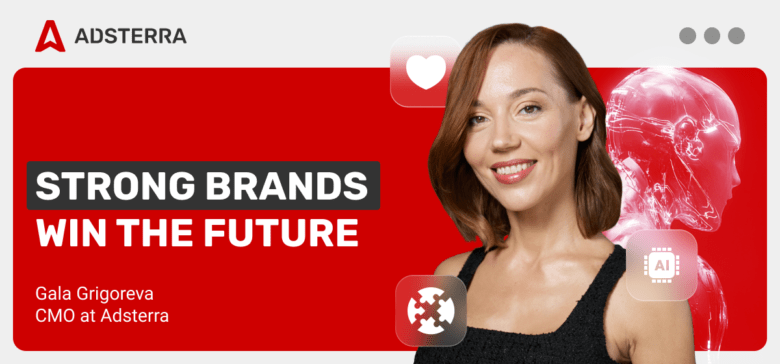We’ve stepped into the AI search and zero-click browsing era where the future of branding is more critical than ever. New business models demand fresh branding practices while brand loyalty is taking center stage. How do you evolve to stay relevant? How do you build a sustainable brand when consumer behaviors keep shifting? The intersection of human touch and data—that’s your answer.
This guide unboxes practical tips and visionary concepts from Adsterra’s CMO, Gala Grigoreva. She navigates key marketing trends, corporate ethical practices, emerging technologies, and human-first tactics that are now responsible for the future of brand growth.

Gala Grigoreva, CMO at Adsterra
The future of branding: offer what machines can’t master
Brands seeking relevance must focus efforts on care, meaning, empathy, and authenticity. The future of branding belongs to companies that prioritize emotional intelligence, adaptability, and problem-solving—what experts now call “heart skills.” Sort of ironic that artificial intelligence has put this trend first, right?
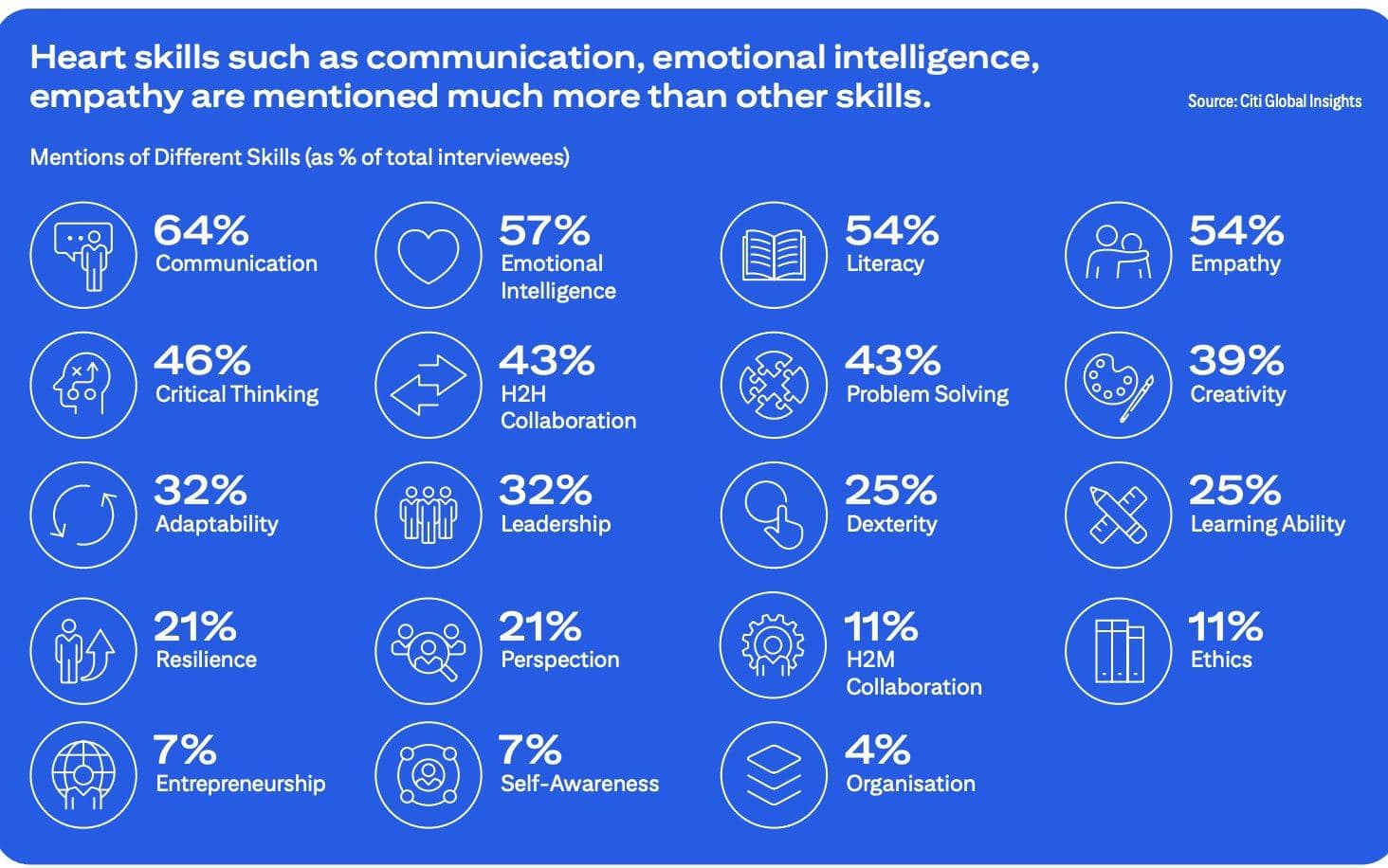
Branding isn’t about logos, slogans, and target audiences anymore. It’s about building experiences that hit people emotionally. Tailored experiences and emotional connections? They build deeper bonds and make your brand stand out in a cluttered digital world.
Visual storytelling will dominate as brands craft compelling narratives using rich visuals and engaging content. With environmentally conscious consumers taking over new markets, brands will have to embrace innovation, sustainability, and authenticity—no way around it.
Human-centric SEO & brand communication
We’re used to thinking about data science and machine learning only when targeting and analyzing audiences. But we miss out on AI SEO (or LLMO, GEO) that is in charge of brand rankings, too. SEO is still a powerful tool in any marketing strategy. And today’s SEO strategy is not only about blog posting; it must embrace brand signals across multiple channels.
AI Overviews, ChatGPT, Perplexity, Claude, and other AI-assistants put context-relevant, intent-matching, and personalized content first. They prioritize brands with a strong media profile. Here’s where marketing efforts align with customer experience expectations: you need to be everywhere your audience hangs out.
AI algorithms evaluate a website’s reliability based on the volume of branded queries, among other things. Lily Ray from Moz.com suggests considering off-site activities like partnerships and brand marketing to create a “striking” and memorable image of your company.
Moving beyond classic SEO is a reasonable tactic that will serve you for years.
Partner Care as brand strategy
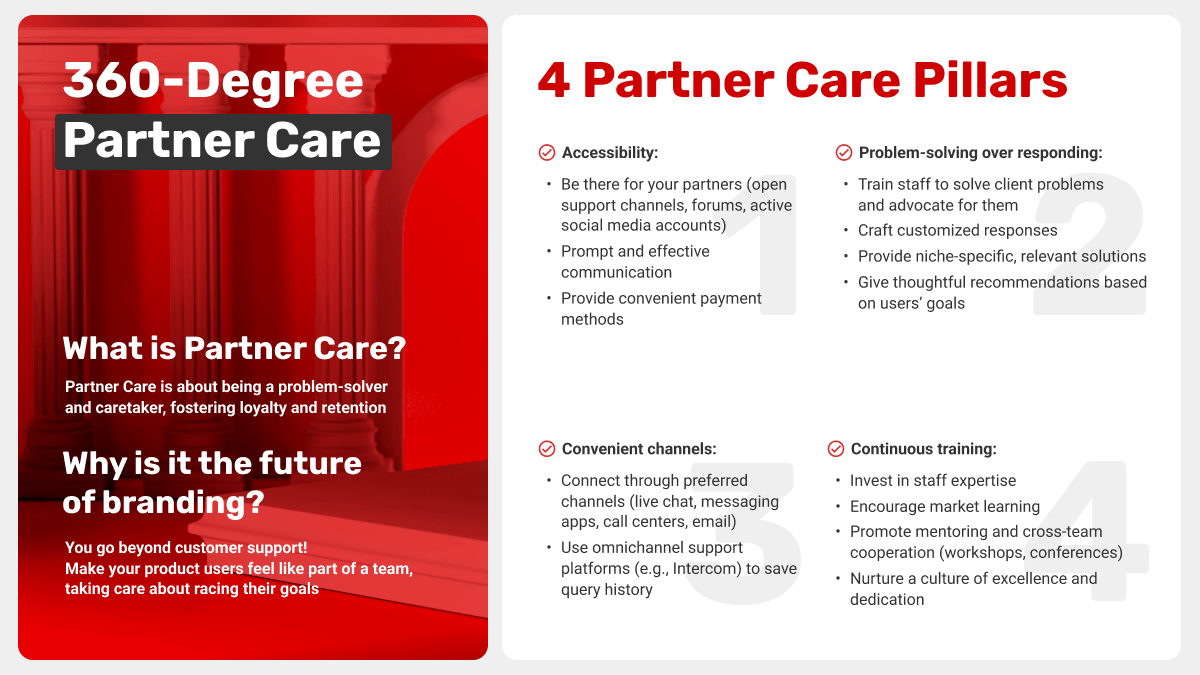
People support brands that prioritize customer satisfaction through 360-degree Partner Care. Beyond resolving helpdesk tickets, forward-looking businesses use omnichannel marketing and live assistance to improve brand experience. Partner Care is what makes people stay—because you’re not just a service provider, you’re a problem solver and caretaker.
Hyper-local targeted campaigns, user-generated content, and ethical practices like fair labor help brands stay relevant. Every touchpoint—from PPC and blogs to smart speakers—should reinforce brand stories and values.
One of the reasons that makes Adsterra the most preferred ad network is its unique Partner Care program, which provides expert and industry-specific support to every one of our partners. Any goal is achievable when it becomes a priority to your ad network!
Diversity, sustainability, and responsibility
Branding trends are shifting toward purpose-driven brands. Getting involved in social and environmental issues isn’t just a trend; it’s a fundamental shift happening right now. Ethical practices and local community fostering matter more to environmentally conscious consumers than ever before.
Which brands are expected to tale the lead? Those that prioritize sustainability, demonstrate social responsibility, and reduce the environmental impact. Modern consumers are willing to change their consumption habits to reduce environmental impact, while longing to companies that care about their homeland and people.
Whether planting trees or sponsoring educational events, these acts of purpose create emotional bonds and boost brand loyalty.

The future of brand marketing extends beyond environmental concerns. It includes fair labor practices and social responsibility, as well. Diversity comes with acknowledging various talents, points of view, and mentalities, allowing brands to stay prosperous and recognizable.
Adsterra, with its 51% female C-suite staff, celebrates female contribution to the adtech world by building and supporting the Women in Tech community in Cyprus. As a proponent of diversity, we’ve been honored to sponsor the landmark event, the first-ever Women in STEM Forum (Cyprus). The female impact on science and technology? Hard to overestimate. And this event proved that beautiful minds are tech leaders of the new era.
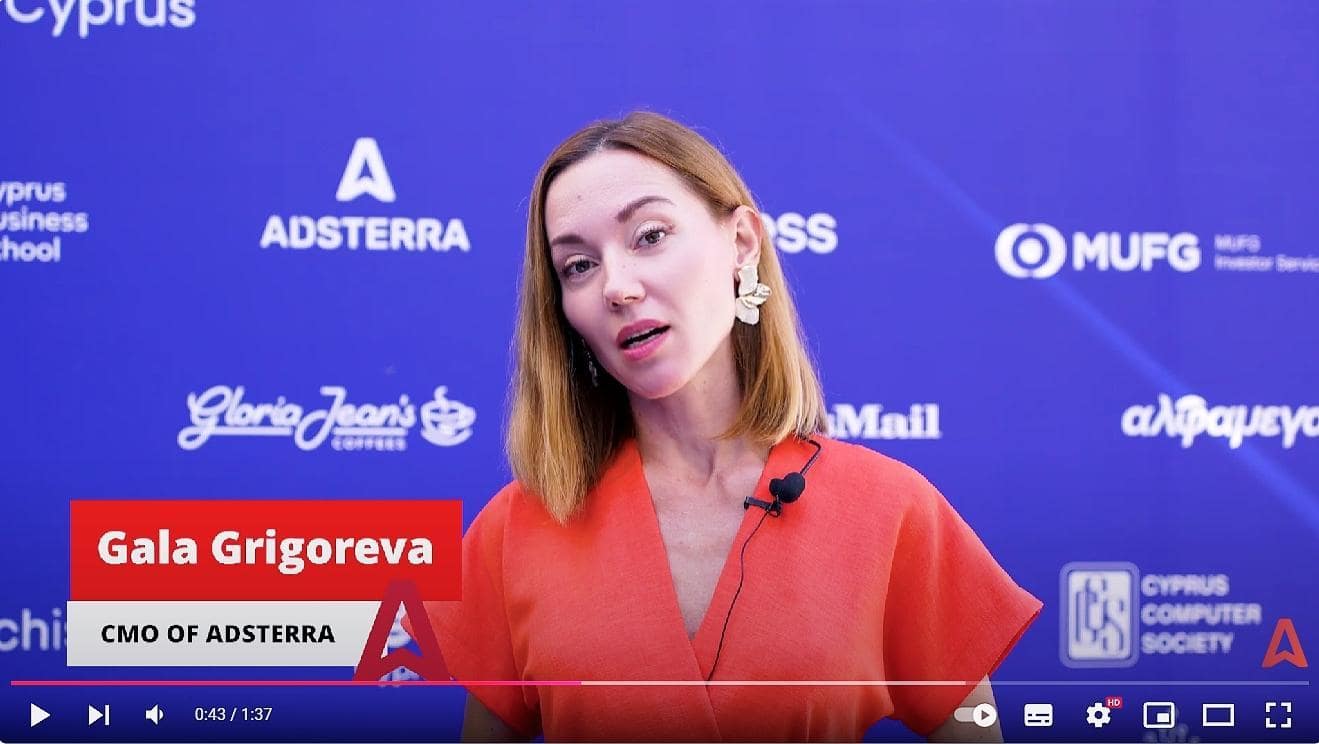
The growing importance of generational branding trends
Gen Alpha is changing the rules of the game right now, that’s for sure. Those born between 2010 and 2024 form the most tech-savvy and unusual generation of all. Fortune expects the economic footprint of alphas to hit $5.46 trillion by 2029.
Gen Alpha may be the future, but strong branding doesn’t hyper-focus. A successful brand speaks to all generations by offering timeless values like transparency and accessibility. From Gen Z to Boomers, everyone values businesses that act responsibly and deliver a consistent customer experience.
Several key trends in brand’s interactions
So how about the key branding trends in communications with customers? All generations prioritize brands that communicate genuinely. No more glossy-glamorous-chic brand marketing. Transparency is over everything: aim to speak honestly and provide a unique experience to product users. If you add personalization and gamification to your communications with younger generations, they’ll spotlight you as their favorite.
It’s not only influencer marketing that fosters community-driven branding. Personalized messages can be transmitted via the brand’s merchandise, for instance. It won’t necessarily include full customization, but it’ll manifest proper values and offer breathtaking design, just like Adsterra’s swag collections.
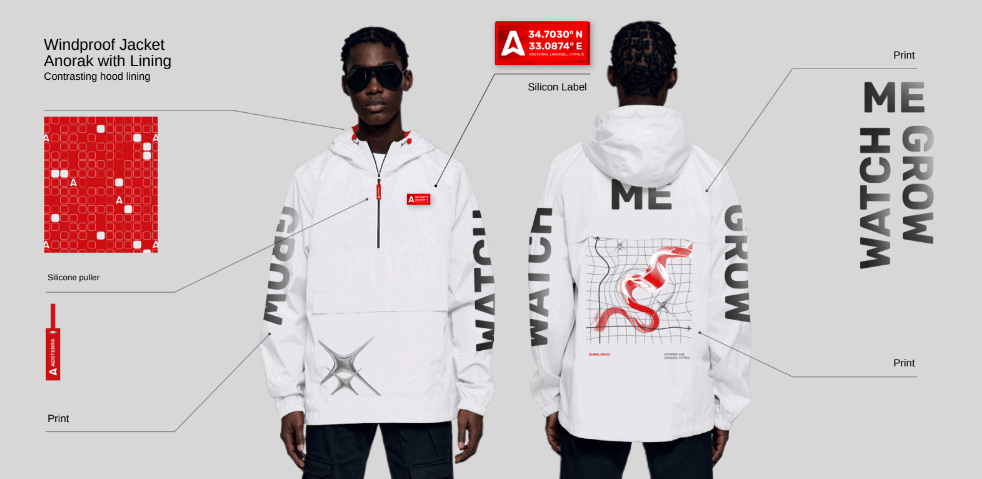
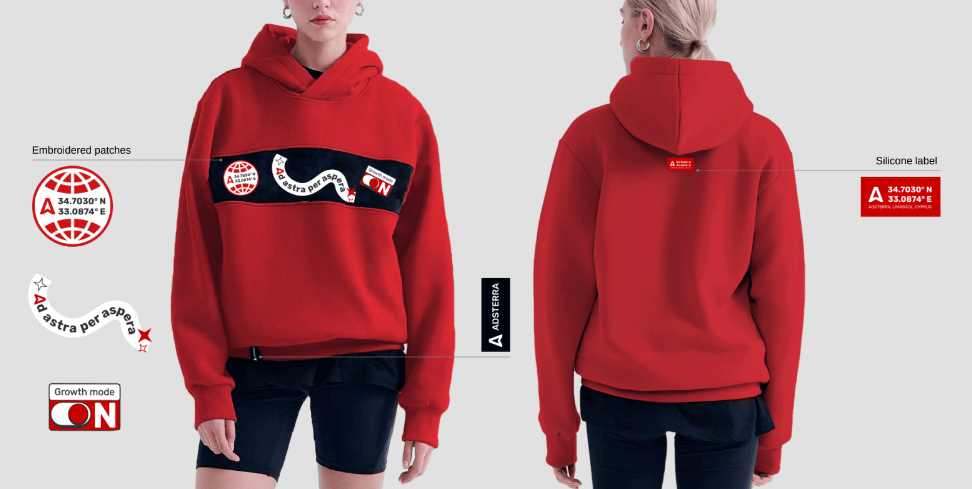
Adsterra’s new swag packages include messages that reflect core values—growth, achievements, and self-representation. We added an inspiring WATCH ME GROW slogan that aligns with Gen Z and Alpha’s pursuit of the limelight but also resonates with earlier generations’ aspirations.
Skill perfection along with well-being
Every generation longs for a mindful career choice. They’re not just looking for a job but a profession that’ll be highly sought after and ensure their sustainable future. The key trend for a strong brand of the future? Be a conscious employer. Whether you hire millennials or Gen Z employees, ensure they have opportunities for growth as versatile professionals.
In terms of prominent growth, I advise paying the highest attention to each pro skill’s manifestations. We at Adsterra hold seasonal conferences and workshops. Teammates can choose a topic that resonates with their personality or center the speech around professional skills.

Successful brands move from awareness to advocacy
Visual consistency and unified messaging across social media platforms and digital worlds help create brand recognition. Integrated Marketing Communications (IMC) is now central to a winning brand strategy.
Here’s how purpose-driven brands stay ahead:
- Invest in multi-channel visibility and visual consistency
- Monitor feedback and brand mentions with tools like Brand24
- Use predictive analytics and machine learning to track branding impact
- Refine guidelines for brand communications across channels.
The IMC approach delivers valuable insights and allows brands to stay relevant and continuously evolve. As we developed Adsterra’s brand messages—growth, progress, and reliability—we incorporated them into every aspect of our communications, including visuals. Here’s an example I took from our Brand Guidelines, which we continue to improve even now.
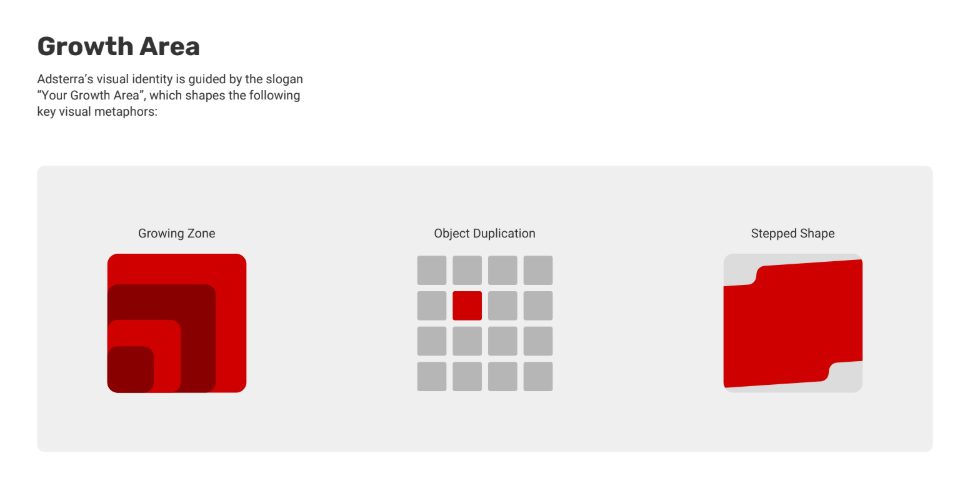
Harnessing technological advancements
Emerging technologies are enabling brands to serve immersive experiences. Virtual reality, augmented reality, and even voice skills for smart speakers fill the gap between a business and its audience—going beyond just a trend.
My strong stand on artificial intelligence is that it must align with a brand’s tone of voice, whether we speak about copywriting, graphic design, or building a chatbot. Humans come first, remember? So, the starting point is a tailored marketing strategy based on what you know about the market and audiences. AI marketing comes to the rescue when you need to make your strategy spark! In other words, AI-driven personalization is a multi-layered concept that can maximize marketing strategy, but only when stitched with the big idea.
What to add here? AI supports granularly targeted campaigns and predictive analytics, helping brands deliver tailored experiences with less effort. AI-powered SEO strategies help enhance brand signals and make you visible. Augmented Reality (AR) and Virtual Reality (VR) can provide immersive experiences that engage consumers interactively.
If we hand mundane tasks to machines, we release our minds for strategic thinking and problem-solving—the heart skills of the future. Adsterra’s Head of Brand Marketing, Sofia Popovidou, shared some insider info about how we included AI in SEO copywriting and design at Affiliate Expo.

The future of branding will also be tightly connected with a commitment to customers’ data privacy and security. Advertising networks like Adsterra equip their platforms with security protocols and algorithms that prevent their users from malicious activities, such as bot traffic, malvertising, account hijacking, etc.
A responsible brand will also pay attention to identifying its customers and the nature of their activities, which is now packaged in the KYC (Know Your Customer) requirements.
Providing in-depth market expertise
Expert guides and tips come as an integral part of every SMB or large brand activity. But most of them aim to push direct sales: product tutorials, setup checklists, or advanced marketing hacks. What’ll make you stand out? Pushing these boundaries.
Create content that’ll make your customers more knowledgeable about the market in which they operate. Your advice should go beyond your product or niche and embrace the overall situation: competition, taxes, regulations, etc. Though it’s a no-brainer, it becomes a direct way to build trust.
- Stay clear and straightforward like our expert was in this guide to iGaming legal compliance.
- Pay attention to newbies in the industry, paving them a path to a painless start with your product like this definitive guide to earning on the Internet.
- Keep your copy sharp and practical, responding to the most painful questions, as our expert did in this article about boosting traffic for CPA campaigns.
- Make your content helpful for customers from various markets like this guide to iGaming marketing in Nigeria.
- And don’t forget to include calls to action and engaging blocks of content to prompt lead generation 😉
Connections instead of brute force selling
Digitalization has played a trick on the branding landscape: we’ve found limitless channels to connect with “traffic.” But thinking of users and customers as traffic is a big no-no. Communication face-to-face is key to tighter bonds with your audience.
A powerful brand of the future (2026-2030) is increasingly expected to be not only visible but tangible. So, go offline! You may choose to attend signature affiliate marketing conferences or other significant market events, such as meetups, hackathons, and workshops.
Just to illustrate: Adsterra sponsored the Youth Tech FEST, a gathering for future data scientists, analysts, and programmers. We included wide publicity of this venture in social media, so anyone related to adtech could mark Adsterra as a company empowering the young generation.
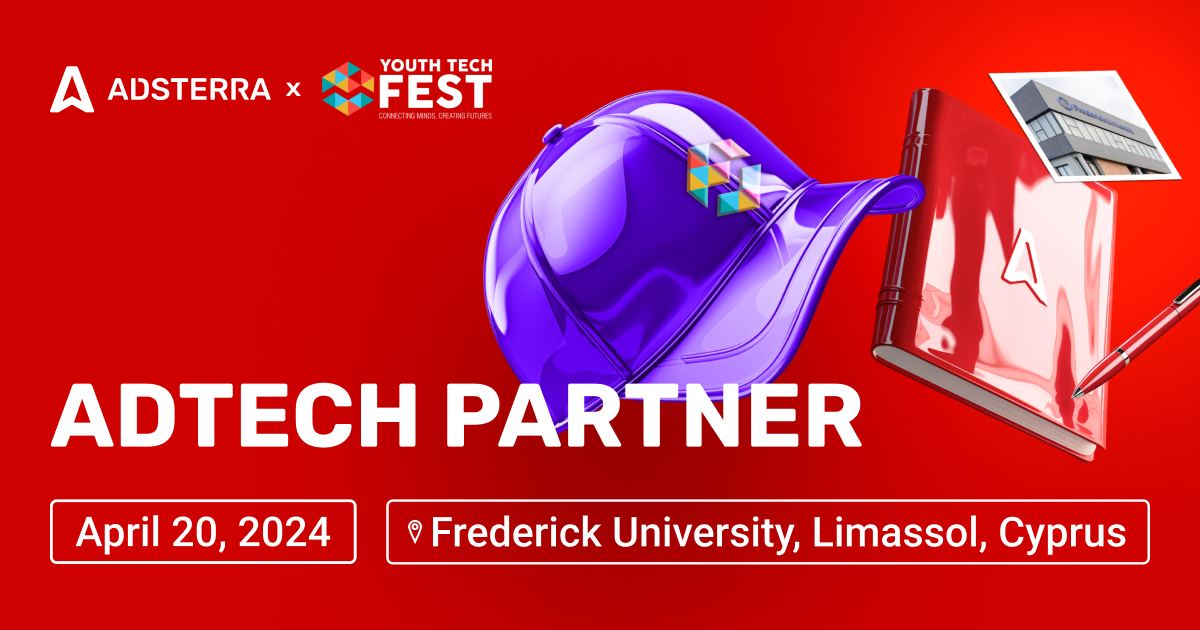
How to measure the impact of branding
The future of brand marketing goes beyond classic CTR/CR metrics. Just imagine how many consumers discover your brand via AI assistants, purchase products using influencers’ advice, or engage with brand threads on industry forums. All these touch points must be at least tracked. Here are some of the key indicators to monitor and measure:
- Overall brand mentions across social media platforms and forums
- Brand recognition surveys
- Customer satisfaction ratings
- Social responsibility initiatives
- AI discoverability (Google Search Console and Semrush now provide such reports)
Understanding these metrics ensures your brand strategy delivers both growth and emotional connections. Below is the answer to these questions. We carry them out based on regular brand awareness surveys.
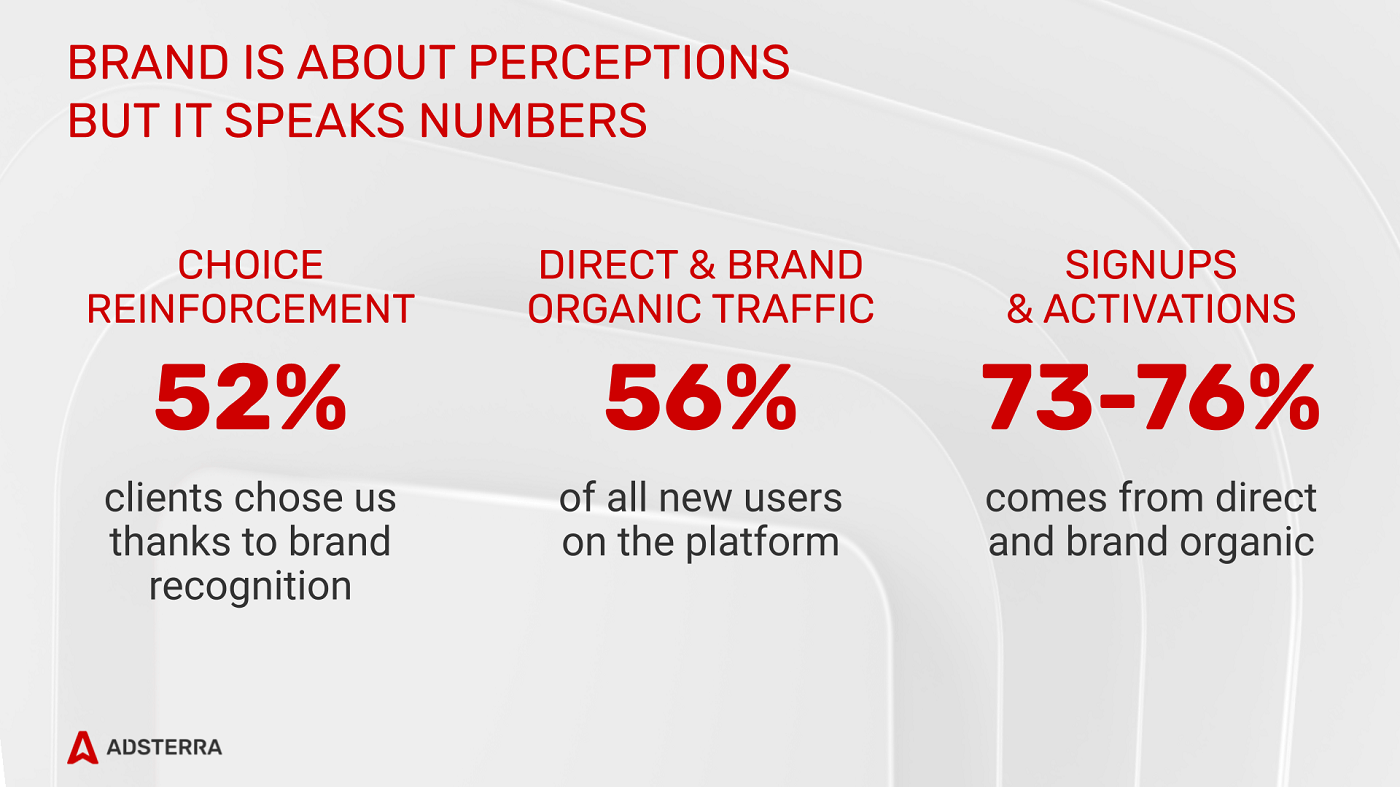
My teammate Sofia, who’s in charge of branding, often points out that “any brand is a two-way communication.” It’s crucial to listen to your audience and understand how they perceive you and what they need.

Regular surveys and feedback help you identify where you’re on track and where adjustments are needed. This allows you to stay connected with your audience and continuously improve your strategy in the era of changing consumer behaviors. At Adsterra, we periodically conduct surveys, and this serves as a compass, guiding our decisions and helping us refine our approach.
Sofia Popovidou, Head of Brand Marketing at Adsterra
Brand mentions are not the only lighthouses of branding success. Your mission here is to monitor all IMC channels and look for extraordinary peaks or drops. We use Brand24 to keep a check on our brand strength compared to competitors.
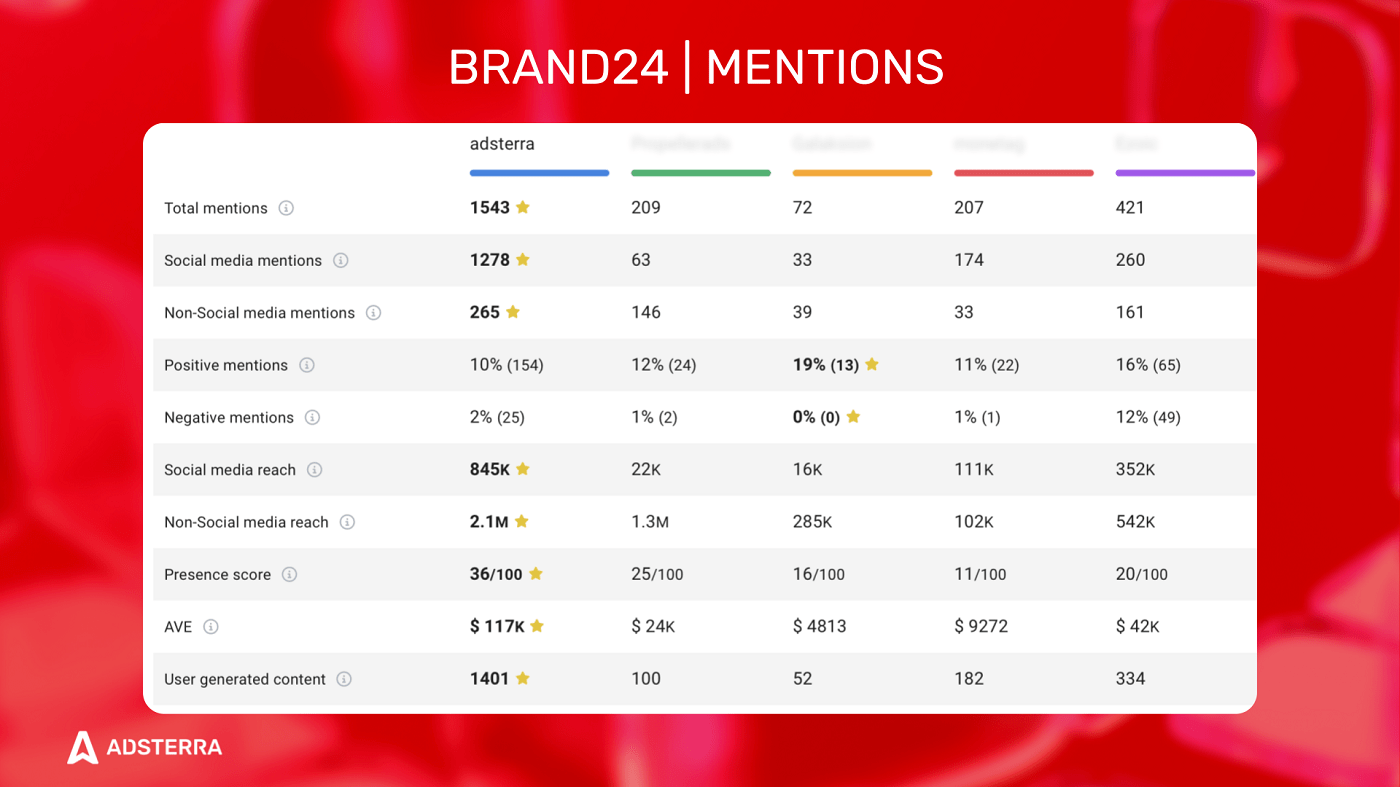
Paving a way to customers’ hearts starts when they get interested in what you do and look for various aspects of your activity: %brandname% payments, %brandname% careers, %brandname% traffic, %brandname% research, etc. Your blog shouldn’t fulfill this interest alone. You need to resort to market influencers, forums, and communities, and connect with opinion leaders, as well.
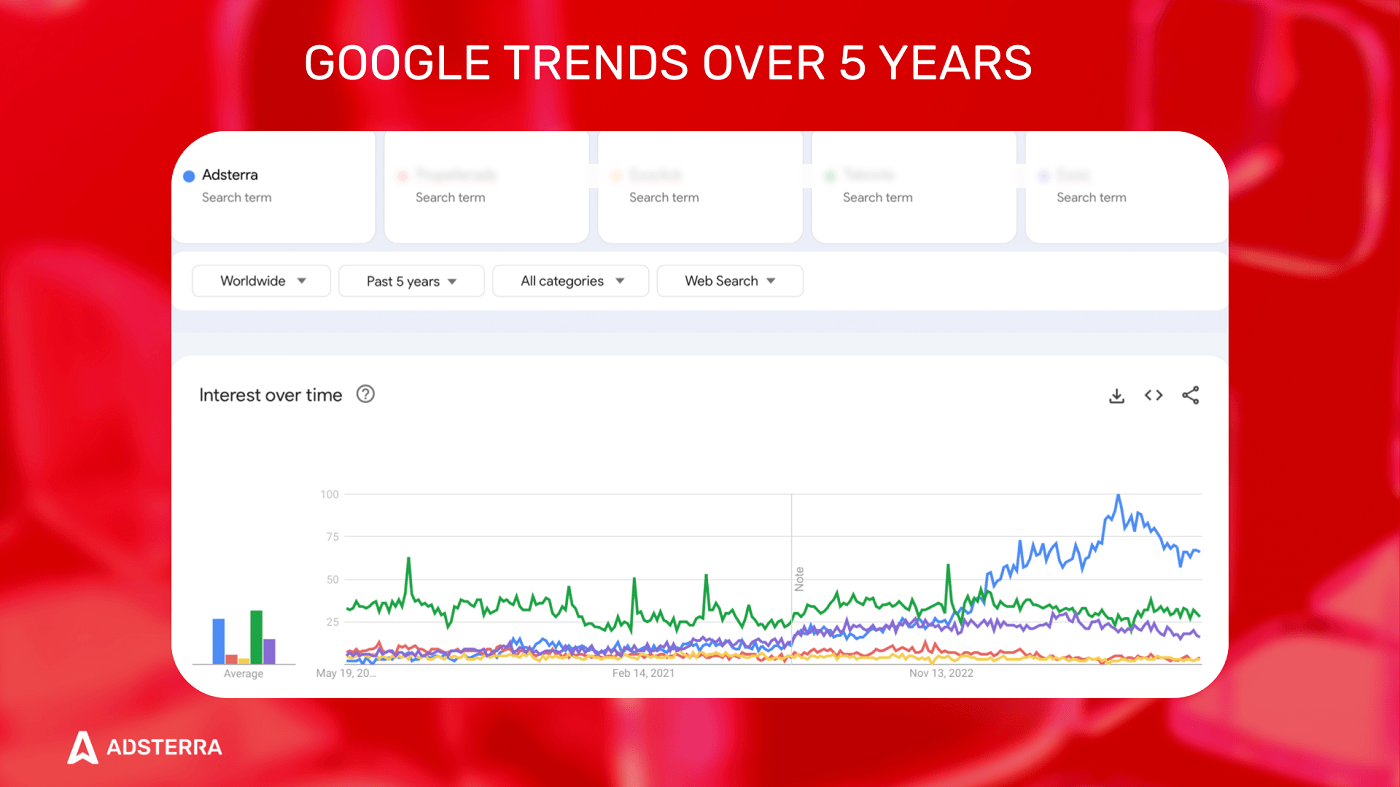
Bottom line: How can brands win the future?
The future of branding cares about both visibility and values. Whether you’re working with affiliate marketing or virtual reality apps, your goal is to create deeper connections. Powerful brands foster a sense of community among their consumers with wording and action.
The branding landscape is changing, opening unprecedented opportunities. You will still need to set OKR and fetch results in real figures. But above this, you need to have the big idea of your message that will align with what your audiences appreciate the most. Stay ahead, embrace innovation, and start providing a unified brand experience when users can:
- Rely on your expertise
- Get quick solutions to their issues
- Feel their values resonate with yours.
Manifest values across all channels. Stick to your word. Increase your offline presence. Invest in your industry development. And, finally, grow your “heart skills.”
FAQs About the future of branding
What is the future of branding and brand marketing?
The future of brands depends on their authenticity, sustainability, and building genuine connections through emotional storytelling. The brands that win are the ones that actually deliver on their promises, prioritize ethical practices, and adopt technology to create experiences that stick. It’s not just about being seen—it’s about being trusted.
How brand strategy will change in the future?
Brand strategy will become more human-centric but powered by AI. AI search, predictive analytics, and omnichannel marketing will enable personalized experiences and meaningful customer engagement.
How can brands ensure future growth?
The future of brand growth centers around customer experience, corporate social responsibility (CSR), and technological integration. Brands will need to adopt environmentally sustainable practices and build emotional connections to stay ahead.
What is the 3-7-27 rule of branding?
According to the 3-7-27 law of prospecting, a potential customer must hear about your brand three times in order to recognize it, seven times in order to remember it, and twenty-seven times in order to purchase from you and become loyal. The rule emphasizes how crucial multi-channel presence and consistent messaging are.
Should brands invest in customer experience?
75% of consumers are expecting transparency from brands. However, true loyalty relies on immersive brand experiences: non-aggressive customer engagement, prompt and expert support, personalization, and storytelling. Brands that focus on sustainable practices can experience a higher annual return than those that do not prioritize sustainability.
Will UGC matter for the future of brand marketing?
User-generated content (UGC) will become the leading factor of building community-driven brand reputation. When customers advocate for you, that’s next-level trust and loyalty. It’s not just hype—it’s a serious driver of lifetime value (LTV).
